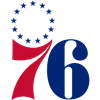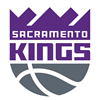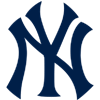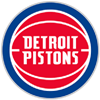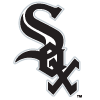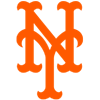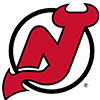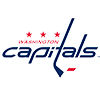Today I'll begin a new series of articles focused on young major league pitchers and hitters.
This first article includes scouting profiles and thoughts of six American League starting pitchers under the age of 25.
I think each has stardom in his future. Some would argue stardom has already taken place. But for me, a pitcher needs at least a couple seasons before he can be called a "star" or an "ace."
Alek Manoah, RPH, Toronto Blue Jays (Age 24)
Manoah was chosen in the first round of the 2019 draft by the Blue Jays out of West Virginia University.
As a junior in high school, Manoah hit .492 with five homers and 32 RBIs at South Dade High School in Homestead, Florida, which helped lead to interest from college coaches.
As the No. 11 pick in the draft, Manoah received a $4,547,500 signing bonus.
Manoah is a mountain of a man at 6-6, 285 pounds. His physical presence on the mound can easily intimidate some hitters. Because of his frame, Manoah has to maintain conditioning and keep from gaining weight and more depth to an already huge frame. Too much strain on his lower half would impact his forearm, elbow and shoulder. Overall, however, Manoah is a good athlete.
One might think that with his great size, Manoah throws his fastball 100 MPH. In fact, he generally sits at 94 with his four-seamer and 93 with his sinker. He also throws a slider and a changeup. The fastball/slider
Today I'll begin a new series of articles focused on young major league pitchers and hitters.
This first article includes scouting profiles and thoughts of six American League starting pitchers under the age of 25.
I think each has stardom in his future. Some would argue stardom has already taken place. But for me, a pitcher needs at least a couple seasons before he can be called a "star" or an "ace."
Alek Manoah, RPH, Toronto Blue Jays (Age 24)
Manoah was chosen in the first round of the 2019 draft by the Blue Jays out of West Virginia University.
As a junior in high school, Manoah hit .492 with five homers and 32 RBIs at South Dade High School in Homestead, Florida, which helped lead to interest from college coaches.
As the No. 11 pick in the draft, Manoah received a $4,547,500 signing bonus.
Manoah is a mountain of a man at 6-6, 285 pounds. His physical presence on the mound can easily intimidate some hitters. Because of his frame, Manoah has to maintain conditioning and keep from gaining weight and more depth to an already huge frame. Too much strain on his lower half would impact his forearm, elbow and shoulder. Overall, however, Manoah is a good athlete.
One might think that with his great size, Manoah throws his fastball 100 MPH. In fact, he generally sits at 94 with his four-seamer and 93 with his sinker. He also throws a slider and a changeup. The fastball/slider combination is really the focal point of his arsenal, but he uses each of his pitches with almost the same frequency.
The tailing life on his fastball makes him difficult to hit. For Manoah, movement on his pitches is critical to his success. There's life on all his pitches. Last year as a rookie, Manoah finished with a record of 9-2, an ERA of 3.22 and a WHIP of 1.04. He struck out an average of 10.2 and walked an average of 3.2 hitters per nine innings.
Manoah can be seen shouting encouragement from the dugout on days he doesn't pitch. He is engaged in the action and not afraid to let an umpire know what he thinks. I like that.
Manoah might not be an "ace" yet on the Blue Jays staff, but he keeps his team in games and controls the opposition with a full variety of quality pitches. Scouting Grade: 55
Triston McKenzie, RHP, Cleveland Guardians (Age 24)
McKenzie became the Cleveland Indians Supplemental first-round draft choice in 2015 out of Royal Palm Beach High School in Palm Beach, Florida. He had agreed to attend Vanderbilt University, but the Indians signing bonus changed his direction. McKenzie was the No. 42 player taken in the draft, and it earned him a $2,302,500 signing bonus.
McKenzie is 6-6, 165 pounds. The lack of depth on his frame has resulted in McKenzie losing stamina in games. He is so skinny, one wonders how he can throw his fastball at 93 miles per hour? But he does. And his rising, four-seam fastball is used on 75 percent of his pitches. McKenzie also mixes in a slider and curveball in his repertoire.
While he relies heavily on his fastball, the movements on his slider and curveball are substantial, making the fastball even tougher to hit. Batters have difficulty with McKenzie when he continues to elevate the fastball during an at-bat, climbing the ladder with each pitch.
McKenzie made 25 starts for Cleveland last season. If he stays healthy, he could be a consequential starter in the American League. But don't look for him to gain weight or get much stronger. He is the size and weight he is, and the Guardians have to watch him carefully without burning him out.
Don't count on McKenzie racking up innings or going deeply in games for you. He will be dependent upon the bullpen after the first two times through the order. Scouting Grade: 55
Matt Manning, RHP, Detroit Tigers (Age 24)
Manning turned 24 in January and he pitches well beyond his age. He was a first-round pick of the Detroit Tigers in 2016. He was selected out of Sheldon High School in Sacramento, California. He was the No. 9 player selected in that draft, and he received a $3,505,800 signing bonus to keep him away from pitching at Loyola Marymount University.
Manning is huge. He played basketball in college, and many thought he would become a professional basketball player. Unlike McKenzie, Manning has a bit more meat on his bones. Still, he carries only 195 pounds on his 6-6 frame. He has long arms and legs that can clearly extend to the point of getting close enough to the hitter to upset the batter's comfort level.
Manning throws both his four-seam and two-seam fastballs at 92 miles per hour. He also throws a changeup, a slider and a curve to round out his repertoire.
So far this season, Manning is much more effective than he was in his rookie 2021 season. He has been dealing with right should discomfort so far this year, and that has to be monitored very carefully. However, he began the season with two outstanding starts. Manning is currently on the Tigers IL with shoulder inflammation. I hope he can overcome that, and it isn't anything serious.
If Manning can stay healthy, he has to continue to develop his breaking pitches to keep up with a good fastball. Commanding his repertoire and missing bats will be important to his success. I view Manning as a mid-rotation starter with a chance to have a very fine career. Scouting Grade: 55
Reid Detmers, LHP, Los Angeles Angels (Age 22)
After the Atlanta Braves selected Detmers in the 32nd round of the 2017 draft, he refused to sign and went to the University of Louisville. In the 2020 draft, the Angels chose Detmers in the first round as the No. 10 overall pick. Detmers signed for $4.67M.
Detmers has a four-pitch repertoire including a fastball at 93, a slider, a curve and a changeup. He has relied mostly on his fastball/curve combination, with his changeup being his least frequently used pitch. That could change as he matures as a big league pitcher. So far, scouts feel his curve is his best pitch.
Detmers throws cross-fire, which is a tough delivery to pick up from a left-hander. His curveball is tough to pick up out of the hand. He commands the pitch well, and he can fool hitters by throwing the curve in the dirt and making the hitter chase. It is difficult for a hitter to know what pitch is coming from Detmers. His repertoire is deep, and his sequencing is solid.
He started five games for the Angels last year, and the results weren't great. But he made the Angels six-man rotation out of spring training and should be able to hold his role all year.
Detmers tries to keep the opposition off balance with his breaking balls. He sets up those pitches well, but he has to be careful not to overuse his fastball to get to those pitches, especially the curve. He's one of the guys who has a high spin rate with pitches at the top of the strike zone. Scouting Grade: 55
Logan Gilbert, RHP, Seattle Mariners (Age 24)
Gilbert is probably the most improved pitcher I saw in spring training this year. He was a first-round draft pick of the Mariners in 2018 out of Stetson University in Florida. He earned a signing bonus of $3,883,800 as the No. 14 player taken in the draft.
Gilbert consistently throws his fastball at 95 to 96 miles per hour. He has a changeup, a slider and a curve. He has a very wicked fastball/slider combination that he relies upon at any count. He has a rising fastball that has late run, resulting in missing bats. Other than his slider, his secondary pitches still need some refinement. But, he is making progress with them.
At 6-6, 215 pounds, Gilbert is a tall, lanky righty with good extension and long arms. He finishes pitches well, and with those long arms, the hitter feels he is right on top of them.
Gilbert has had sparkling starts so far for Seattle. He is striking out an average of eight hitters and walking an average of less than one batter per nine innings. Scouting Grade: 60
Shane McClanahan, LHP, Tampa Bay Rays (age 24)
McClanahan turns 25 April 28. He was a first-round pick of the Tampa Bay Rays in 2018 out of the University of South Florida in Tampa. He was given a $2,230,100 signing bonus as the No. 32 player taken in the draft. The Rays chose outfielder Nick Schnell at pick No. 33, right after choosing McLanahan. Schnell was given a $2,297,500 signing bonus.
McClanahan is 6-1, 200 pounds. His fastball has moved up a tick to 97.5 MPH this season. He also relies on a wicked curveball, which he throws just a tad less frequently than his fastball. His fastball/curve combination are supplemented by a slider and changeup. Ironically, it was his slider that was his second most used pitch in his repertoire last season. So there has been a change in his pitch mix and sequencing.
McLanahan keeps hitters off balance. So far, he is striking out an average of 14 hitters per nine innings in his three starts. If he keeps up that pace, he will be among, if not the highest strikeout leaders in the game. He is walking three hitters per nine. He had a reputation of rushing his delivery, but that has changed. He is steady on the mound, and his mechanics have improved markedly with experience and repetition.
My only hesitation about McLanahan is the Rays pitching philosophy. I never know if he'll be allowed to pitch deeply into games. So far, so good. Scouting Grade: 60
HEADING HOME:
The fraternity is small. Only Willie Mays, Hank Aaron, Eddie Murray, Rafael Palmero, Alex Rodriguez and Albert Pujols have 500 home runs and 3,000 hits. The great Miguel Cabrera will join that club.
I didn't hear much buzz about Nolan Arenado in preseason fantasy baseball talk. Now, as we continue in the first month of the season, Arenado is on fire. The guy is peppering doubles, hitting home runs, hitting for average and driving in runs. He's a fantasy league winner if he comes anywhere close to keeping his current pace.
Among fantasy surprises so far may include the Marlins Jesus Sanchez and the Guardians Steven Kwan. Sanchez is a power source; Kwan will help with on-base percentage and batting average.
The nightmare of Francisco Lindor seems to be in the rear view mirror. I am watching a more relaxed Lindor attack pitchers with a bit more measured swing. So far, he's delivering for the Mets. He's hitting homers and driving the ball better than I have seen in years. But…can that sustain?
I saw Seiya Suzuki homer in spring training. Scouts like to say he has an "American" swing, as opposed to Japanese hitters like Ichiro. That swing has resulted in plenty of power and a great start stateside for Suzuki. The Cubs have to be thrilled. But, pitchers will adjust to him.
I don't believe Jurickson Profar can continue the power we have seen so far. I'm just not convinced he won't be hunting home runs with every swing, ruining his chances to be a solid, reliable hitter. I hope I'm wrong.
Pablo Lopez. The guy is for real. Merrill Kelly. He's solid as well. Both have been "lights out" in their early starts, but both play for mediocre (Marlins) to bad (Diamondbacks) baseball teams. In leagues that count "wins" as a category, they may not deliver that category, but everything else works.
I marvel at the rhythm on the mound of Carlos Rodon. I still think there are issues with his shoulder, forearm or elbow that may surface in the season, but ride him while you can. The Giants have the perfect home park for him, but…he has to pitch in Colorado and Arizona. Those may cause a bit of a hiccup. But Rodon is cagey. His repertoire is deep. He can pitch anywhere and win. If he stays healthy.
I passed on Gerrit Cole and Jacob deGrom, and I'm glad I did. I saw either yellow caution lights or red lights for both. They could both rebound, because the season is long. But I'll take my chances with other starters I like more.
MLB should extend rosters to 28 beyond May 1. Injuries are far too prevalent, and teams need the depth the extra two players provide. I hope they extend the rosters until the All Star Game.
MLB and the MLBPA blew it in rushing to start the season. They blew it in demanding there be a full, 162-game season. Both sides wanted the money. Neither side would settle for starting the season on May 1, when weather would be warmer and teams would have had a full spring training. As it is, we are seeing hamstring isses, pulled muscles, arm injuries, elbow injuries, etc., from position players and pitchers. It will get worse.
I'm skeptical about the number of players placed on COVID injured lists. I think the entire system of reporting COVID facts in MLB should be revisited and revised. Who do we believe?
And by the way, all Yankees players report having been vaccinated, meaning they can play in Toronto.
Thank you for following me on twitter @BerniePleskoff and for reading my work at Forbes. I hope you will leave questions are comments for me in the comment section below. I will try to answer them all. Next Week: Five National League pitchers I like under the age of 25.
Have a great week.








